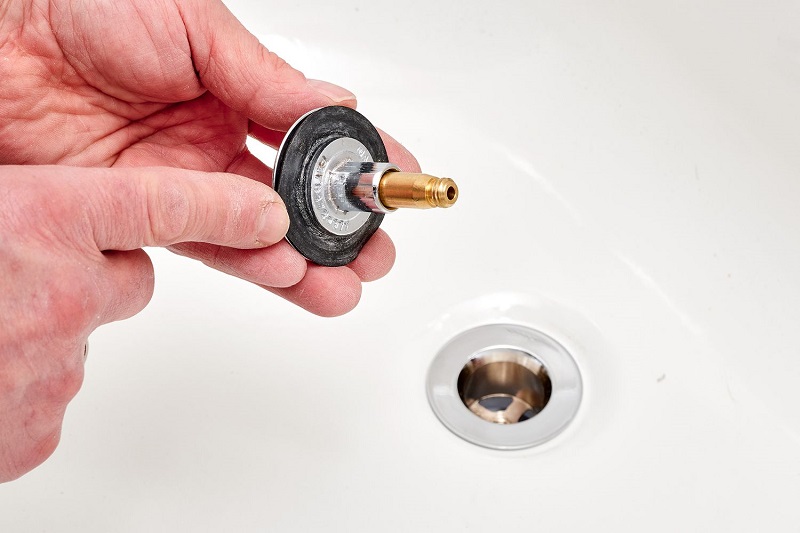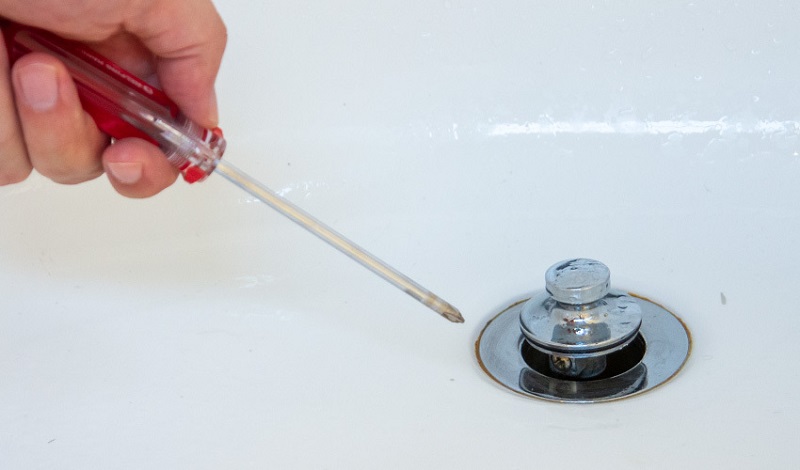
Is it Normal for Water to Sit in Bathtub Drain?
Picture this: you step into your bathroom, ready for a relaxing bath after a long day. You fill the bathtub with warm water, immerse yourself in its soothing embrace, and as you let the day’s worries melt away, you notice something peculiar—water is sitting in the bathtub drain. Is this normal? Could it be a cause for concern? Don’t fret; you’re about to dive deep into the world of bathtub drains and uncover the mystery behind the water that lingers there.
The Enigma of the Bathtub Drain
Ah, the bathtub drain—a seemingly simple fixture with hidden complexities. It’s not uncommon to wonder why water doesn’t seem to vanish down the drain as you might expect. The answer to this puzzle lies in a crucial plumbing feature known as the P-trap.
Understanding the P-Trap
The water in the bathtub drain isn’t just any water; it’s part of a plumbing design that’s ingenious in its simplicity. Enter the P-trap—a name derived from its shape, which resembles the letter “P.” This clever device isn’t there to play tricks on you; rather, it serves a vital purpose in maintaining the hygiene and comfort of your home.
The Role of the P-Trap
So, why is there water in the P-trap, and what does it do? Think of the P-trap as a barrier that prevents unwanted guests—sewer gases—from infiltrating your living space. Sewer gases are, as you can imagine, less than pleasant. They carry unpleasant odors and can even pose health risks when inhaled. The P-trap’s primary job is to create a seal that blocks these gases from ascending through your drains.
The Dynamics of the Seal
Here’s how the seal works: the P-trap retains a certain amount of water, which forms a barrier between your living area and the sewer lines. This standing water in the P-trap is an effective barricade, stopping sewer gases from backing up into your home. It’s like having a protective moat around your castle, keeping out any undesirable intruders.
The Water’s Tale: What It Tells You
Now that you know the purpose of the water in the bathtub drain, let’s delve into what the presence of this water signifies.
Always Present, Always Protecting
The water within the P-trap should always be there. Its constant presence ensures that the seal remains intact and functional. This is essential for safeguarding your living environment from the infiltration of sewer gases.
A Sign of a Well-Behaved P-Trap
If you notice water standing in your bathtub drain, it is a positive sign that your P-trap is doing its job effectively. It’s reassuring that the seal is in place and successfully prevents unwanted odors from entering your home.
When Water Becomes a Messenger
However, there are times when water in the bathtub drain can deliver a message. If you find that the water isn’t draining as it should or detect an unpleasant smell emanating from the drain, these could indicate a potential issue with the P-trap. It might be clogged or compromised in some way, disrupting the seal and allowing sewer gases to seep in.
Maintaining the Status Quo: Tips for a Happy Drain
To ensure that your bathtub drain and its trusty companion, the P-trap, continue to function optimally, a little maintenance goes a long way.
Clear the Path
Regularly clearing your drain of hair, soap scum, and other debris prevents clogs that could obstruct water flow. A clear drain means efficient drainage and a well-functioning P-trap.
The Occasional Flush
Give your drains a good flush with hot water now and then. This helps prevent the buildup of residues that can lead to blockages.
Watch Out for Warning Signs
Stay attentive to any changes in water drainage or any unusual odors. These can be early indicators of potential P-trap issues.
In Conclusion
To wrap it up, the sight of water lingering in your bathtub drain is no cause for alarm. It’s a clear sign that the P-trap is dutifully safeguarding your home from the intrusion of unwanted sewer gases. This simple yet effective plumbing feature ensures your living space remains fresh and pleasant.
FAQs
Q1: Is it normal for water to sit in the bathtub drain even when I’m not using it?
Yes, it’s entirely normal. The water in the P-trap stays in place to maintain the seal against sewer gases.
Q2: Can I remove the water from the P-trap to save water?
Removing the water from the P-trap is not advisable, as this would compromise its seal and ability to prevent sewer gas infiltration.
Q3: How often should I clean my bathtub drain to prevent clogs?
Regular cleaning is recommended—about once a month—to prevent debris buildup and potential clogs.
Q4: What should I do if I notice foul odors coming from the drain?
Foul odors could indicate a problem with the P-trap or a clog. It’s best to address these issues promptly to maintain a healthy living environment.
Q5: Can I use chemical drain cleaners to clean the P-trap?
Using chemical drain cleaners is generally not recommended, as they can damage plumbing components. Opt for safer alternatives like hot water or a mixture of baking soda and vinegar.




Average Rating